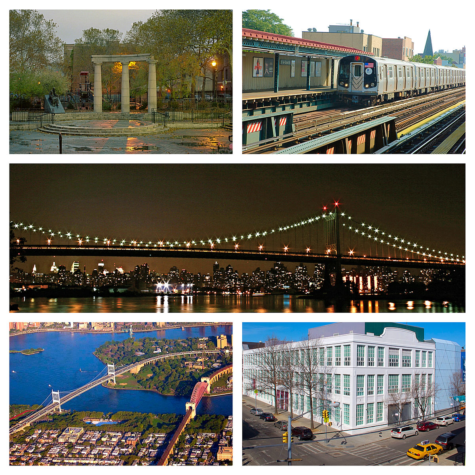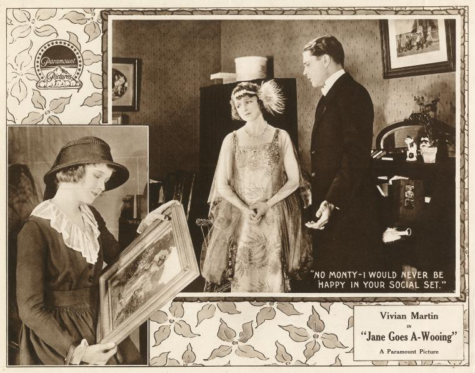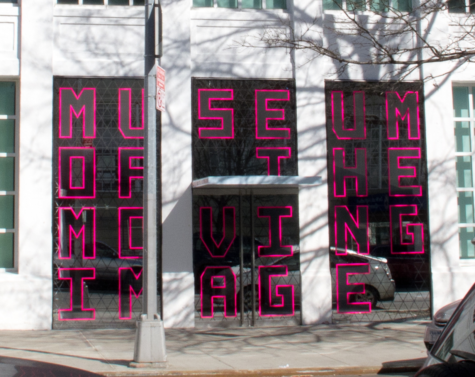Hollywood at Home: Cinema History in Queens, New York City
Before there was Hollywood, there was Queens. An inside look at the rich film production history right here in New York City.
Dinker022089, CC BY-SA 4.0
On 34th Avenue and 36th Street in Astoria, Queens, New York, producers, directors, and industry professionals gather at Kaufman Astoria Studios to practice the art of film.
“Quiet on set — action!”
Cameras roll and extras scramble under searing spotlights. While these sights and sounds are not typically associated with New York City bustle — where it is quite difficult to achieve “quiet on set” — the city maintains an illustrious and deep-rooted relationship with filmmaking and film history.
In February 2022, the New York Department of Buildings approved construction for a new 775,000-square-foot film production studio in Astoria, Queens. The $600 million movie studio — first announced in 2019 — will be backed by Hollywood star Robert De Niro, his son (real estate broker Raphael De Niro), producer Jane Rosenthal, and architect Bjarke Ingels.

The seven-story Wildflower Studios project is set to become “the first vertical commercial film, television, and creative studio in the world,” complete with 11 sound stages, a fitness center, offices spaces, cafes, and lounges. Sandwiched next to Steinway Pianos manufacturing warehouse and Luyster Creek, the project will also flaunt an expansive waterfront esplanade that will be open to the public. It is set for completion in late 2023.
“I think the project is fantastic, but honestly a surprise. Queens is underrated and not too many big name people seem interested in the area,” said Samantha Candelo, a senior from NEST+m high school and a Queens native. “I think that’s an amazing opportunity for representation in the media, since diversity is such an asset for Queens,” added Spring Lin ’22. While some Queens residents have expressed fear over landscape changes in the area, the new “vertical film village” is projected to bring hundreds of new construction jobs and over 1,000 daily union jobs to the industry.
The studio is the second major investment for industry legend and New Yorker Robert De Niro, who first launched the world-renowned Tribeca Film Festival in 2002. “The demand for original content creation is exploding, and with its talent pool and creative energy, New York City is a natural home to that evolution,” said Wildflower Studios president Adam Gordon in The New York Times.
While this venture presents an exciting opportunity for the growing industry in New York City — now back to pre-pandemic levels — Wildflower will certainly not be the first. The iconic Silvercup Studios (The Devil Wears Prada; Sex and the City; Gossip Girl) has been operating in Long Island City since 1983. Steiner Studios (Enchanted; Revolutionary Road; Spider-Man 3) — the largest film and TV complex outside of Hollywood — opened in Brooklyn Navy Yard in 2004. Astoria is already home to the renowned Kaufman Astoria Studios (KAS), “New York’s premier film and television product complex,” that features New York City’s only Hollywood-style backlot.
Legendary Hungarian-American film producer Adolph Zuckor opened Astoria Studios in 1920 for the Famous Players Film Company (which merged into Famous Players-Lasky and later into Paramount Pictures, a member of the “Big Five” studios now dominating the market). Following Thomas Edison and William Kennedy Dickson’s invention of the kinetograph/kinetoscope in a New Jersey laboratory, the East Coast film industry flourished with Astoria serving as “Mecca of the Silent Era.” Its convenient proximity to the Broadway theater district drew many creatives to the area, and they produced over 100 films throughout the 1920s.

Astoria Studios became the home base of legendary actors and actresses such as Gloria Swanson, sisters Dorothy and Lillian Gish, Clara Bow, W. C. Fields, Gary Cooper, Claudette Colbert, and Rudolph Valentino, the most popular talents from the silent film period. The iconic Marx Brothers — widely regarded to be the most influential comedians of the 20th century — moved from Broadway to the silver screen in Queens, producing their first movies The Cocoanuts (1929) and Animal Crackers (1930) at Astoria Studios.
However, the end of the silent era and Great Depression uncertainty sparked rapid transformation as the industry shifted from the East Coast to the West Coast. Talent packed their bags and cameras, venturing towards California’s thirty mile zone (“TMZ” or “studio zone”), where the movie industry still predominantly remains. Filmmakers preferred sunny Los Angeles for its spaciousness, diverse terrain, consistent weather, and accessibility. Most importantly, they wished to free themselves from the bounds of Thomas Edison’s restrictive patent laws, which came with his founding of the Motion Picture Patents Company.
As Paramount Pictures moved west, Astoria Studios served as a rental facility for media and creation. Eventually, in 1942, the United States Army Signal Corps Army Pictorial Service took over the studio for the production of indoctrination, training, and medical films. “It became a top secret base. We were in World War II and every moving image that the Armed Services saw from 1942 to 1970 was either done here or controlled out of here,” said Hal Rosenbluth, President/CEO of Kaufman Astoria Studios. This continued throughout the Korean War and the United States’ anti-communist period.
The United States Army abandoned Astoria Studios in the early 1970s, and it began to deteriorate over a six-year period. It was the 1977 solidification of the Astoria Motion Picture and Television Center Foundation and the studios’ National Landmark designation that helped restore passion and energy into the facility. Its further restoration (and re-naming) came with assistance from the New York State Council on the Arts and hefty investments from real estate magnate George S. Kaufman.

Today, most production studios opt to film in Los Angeles and Atlanta, Georgia, but Kaufman Astoria Studios continues to support independent artists and the community. In March 2021, KAS announced a $2 billion project to re-develop five blocks into a “mixed-use creative district.” New York City’s filmmaking scene is only strengthening with tax incentives, grants, and ambitious real estate initiatives.
While Queens no longer holds the glitz and glam allure of the 1920s film era, its history enriches Astoria — and the cameras are still rolling as the industry continues to expand.
“The demand for original content creation is exploding, and with its talent pool and creative energy, New York City is a natural home to that evolution,” said Wildflower Studios president Adam Gordon.
Marian Caballo is a Copy Chief for ‘The Science Survey,’ and she is elated to be on staff for a second year. She is drawn to journalism because it...











